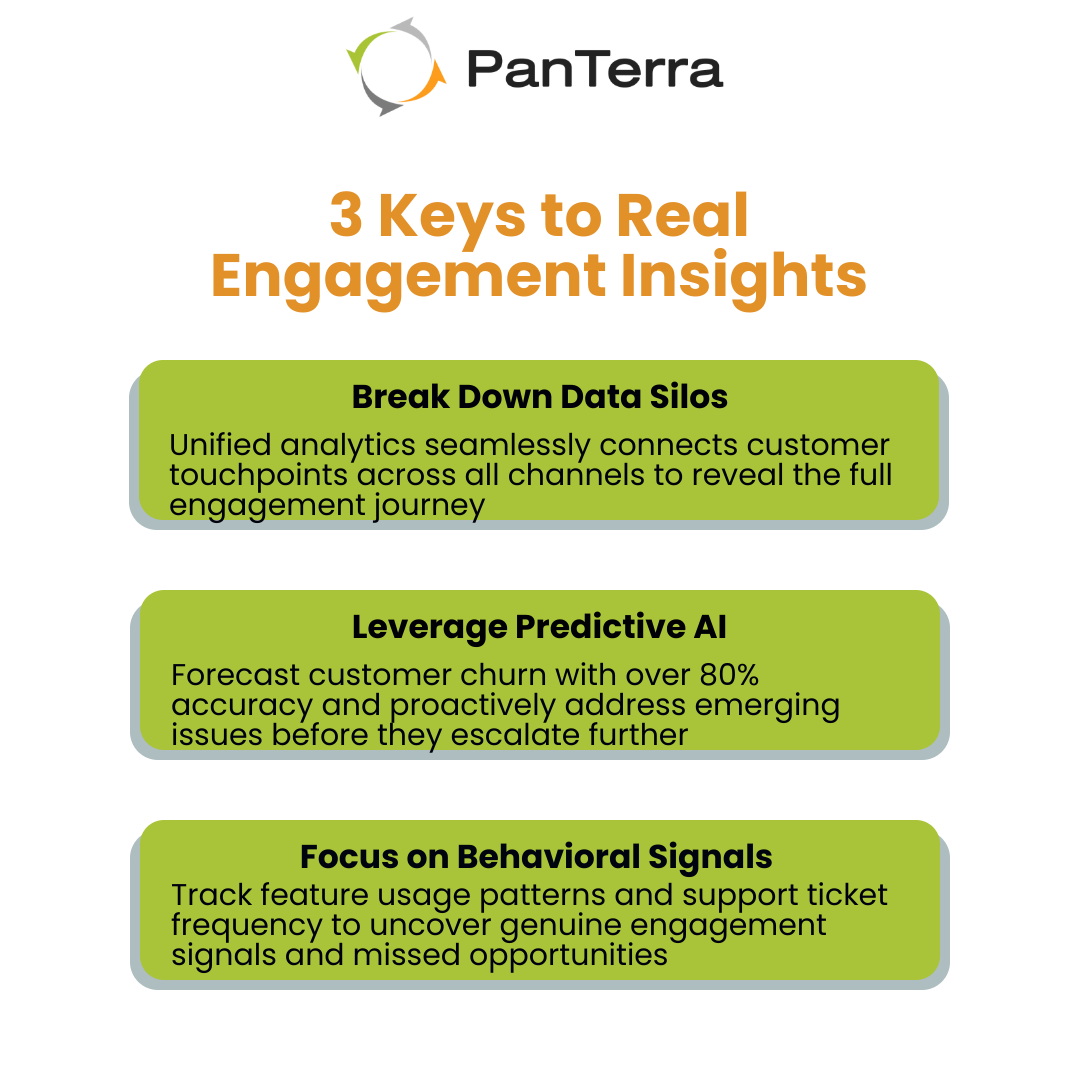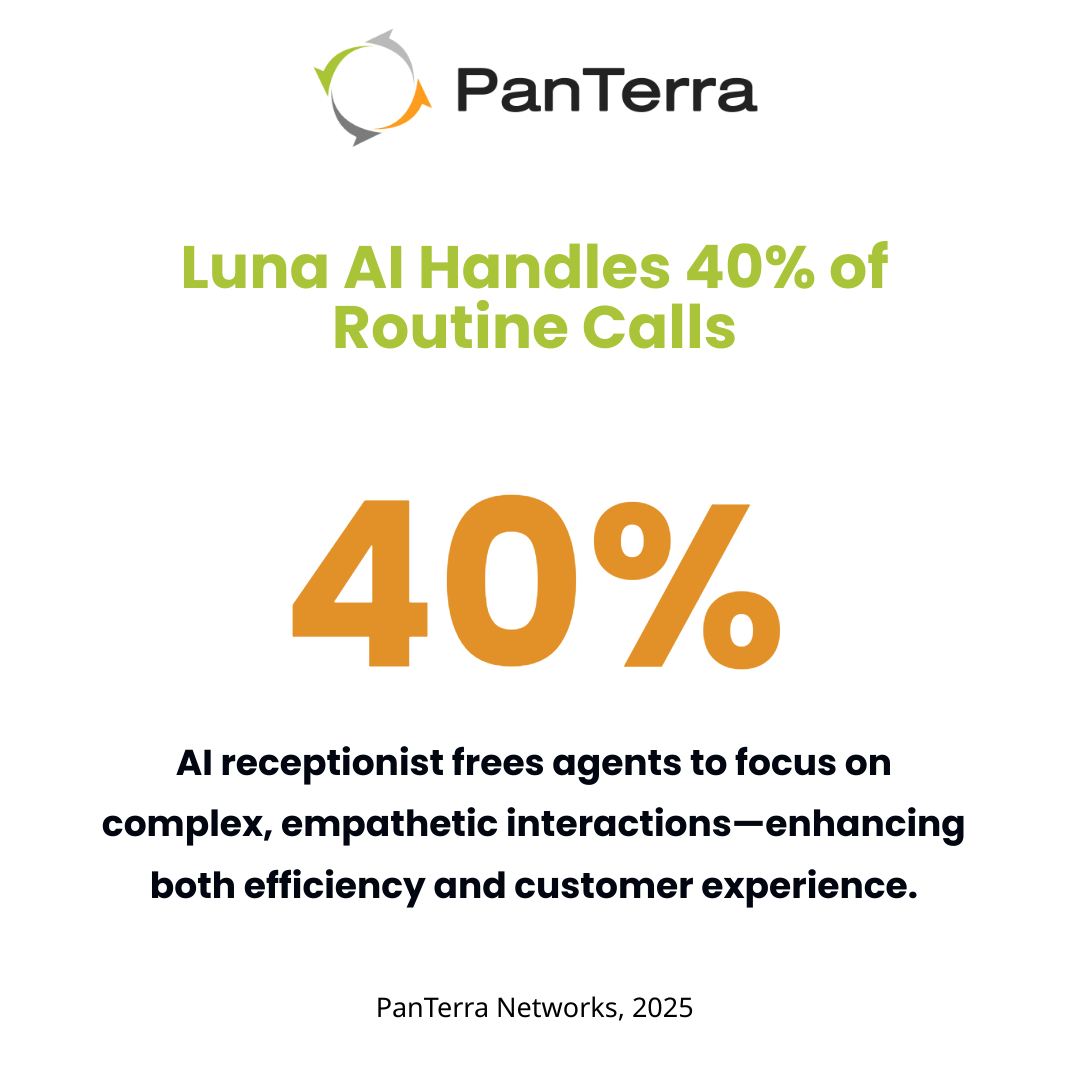Customer Engagement Analytics: Channels, KPIs and a proven framework
October 27, 2025

Data doesn't build relationships, people do.
Yet many businesses collect mountains of customer information without extracting meaningful insights, missing the human connection behind every interaction.
Micro-moments matter: a slight pause, an unexpected question, or a change in behavior signals intent that numbers alone miss. Such subtle cues provide the foundation for meaningful engagement.
We should rethink analytics as a human dialogue powered by AI. Especially as McKinsey reports, organizations are increasingly using AI in multiple functions.
But AI-powered insights must enhance the personal touch that builds lasting loyalty, shifting passive reporting toward predictive engagement by interpreting signals in real time. Let’s look at how to do that with practical KPIs and a tested framework.
Why Most Analytics Miss the Point About Real Engagement
We see this problem regularly with our clients.
A healthcare provider once showed us their impressive dashboard filled with call metrics. They had satisfaction scores and website analytics, too. Even with this wealth of information, they couldn't explain why patient retention was dropping.
The missing piece was that their systems couldn't connect the dots between different customer touchpoints.
Operational efficiency metrics show that unified analytics can reduce hold times by up to 15%. They also identify service bottlenecks quickly and work in sync.
The Problem with Data Hoarding Instead of Understanding
Most SaaS companies maintain separate systems for customer relationship management and communication tools.
Research finds that data silos cost companies about 350 hours per year in lost productivity.
Healthcare providers similarly struggle when patient records exist in isolated databases. Communication histories and satisfaction surveys live in different systems, too.
This type of fragmentation makes it nearly impossible to develop a unified view of patient engagement.
From Reactive Reports to Predictive Customer Intelligence
AI-powered platforms can transform passive reporting into active foresight by analyzing patterns that humans might miss.
Customer engaging communication solutions can spot subtle engagement shifts before customers voice dissatisfaction.
The shift from reactive to predictive analytics represents a fundamental change in approach. Instead of simply documenting what happened, AI forecasting helps anticipate customer needs.
What Success Actually Looks Like in 2025
Success in customer engagement revolves around behavioral analytics that reveal deeper insights by tracking patterns that indicate genuine engagement.
A customer who repeatedly asks about the same feature before cancelling signals a missed opportunity that traditional metrics miss.
The most valuable engagement signals often appear in unexpected places. A slight increase in support ticket frequency can predict future behavior more accurately than satisfaction surveys.
Changes in feature usage patterns typically reveal intentions before customers express them directly.
Measuring success requires looking beyond surface-level interactions to understand the why behind behaviors. This changes analytics from a passive reporting tool into a strategic asset for the future.

How to Turn Signals Into Customer Strategy
5 Micro-Moments That Predict Customer Loyalty
SMS confirmation response times signal customer sentiment:
- Quick replies indicate engagement
- Delayed responses may suggest dissatisfaction or disinterest.
Voice interaction patterns reveal uncertainty. Based on our client data, pauses that exceed 3 seconds usually precede support escalations.
Feature adoption sequence predicts retention. Our internal studies show users exploring advanced features in their first week tend to stay longer with the product.
Support ticket language shifts before major decisions. We've observed neutral language turning slightly negative about 45-60 days before cancellation in many cases.
Chat session duration changes indicate relationship evolution. Shorter sessions over time generally suggest growing product familiarity and comfort.
The Unified Data Game-Changer
A single analytics view must combine voice, chat, email, and SMS interactions.
That is what reveals the complete customer story. Integrated solutions are quickly becoming the standard for businesses of all sizes, as reported by G2.
PanTerra and Five9 bridge unified communications and contact center data, eliminating blind spots by consolidating interaction data.
Results from healthcare providers demonstrate the impact. A medical practice we supported unified their patient communications across channels. They discovered appointment reminder preferences strongly predicted overall satisfaction scores.
[Video]
The L.A.A.E. Framework for Engagement Success
The L.A.A.E. methodology offers a structured approach to leveraging micro-moments.
By systematically processing these signals, companies can anticipate needs rather than just react to problems.
- Listen: Capture interaction details such as tone shifts, pauses, and sentiment patterns. This requires enterprise-grade reliability to ensure that no signal is lost during live customer interactions.
- Analyze: Use AI transcription to detect intent and sentiment. This step transforms raw data into actionable intelligence about customer needs.
- Act: Create personalized responses based on detected patterns. This might include reaching out when systems spot potential dissatisfaction signals.
- Evolve: Refine strategies continuously based on outcome metrics. The framework creates a feedback loop that improves accuracy through machine learning.
This proactive stance builds stronger customer relationships and drives growth.
And with Streams.AI, businesses can go further than ever before.
When Analytics Become Empathy Through AI Partnership
Emotional intelligence is central to customer engagement. Effective AI interprets human signals and responds with empathy: the analytics-empathy combo turns routine interactions into loyal relationships.
We've seen remarkable results with Luna AI Receptionist in our client deployments. The system analyzes conversation flow, tone, and intent to provide natural responses.
Luna handles about 40% of routine calls while seamlessly transferring complex situations to live agents. Our small business clients report both cost savings and improved customer satisfaction.
Communications-enabled analytics integrate real-time KPI alerts (often within five minutes) with live supervisory tools, contributing to an average 12% uplift in first-call resolution.
Supervisors can silently listen and whisper guidance to agents without customers hearing, keeping the human touch strong while boosting efficiency.
AI That Amplifies Human Connection
AI customer service enhances agent capabilities through real-time guidance.
Systems analyze customer tone and provide suggested responses that match emotional context. Agents receive support that helps them deliver more personalized service.
During a recent healthcare client implementation, we watched as Luna managed appointment scheduling and basic insurance questions. That freed staff to handle sensitive patient concerns that required genuine empathy and clinical knowledge.
Gone are the days when automation focused solely on efficiency metrics.
AI that recognizes context and emotion: this is the tech that amplifies human strengths, both for internal teams and customers.
3 Measurable Ways Analytics Drive Real ROI
Operational savings emerge from reduced handle time. Agents equipped with AI guidance resolve issues faster without sacrificing quality.
One retail client saw a 15% reduction in average call duration after implementing empathetic analytics in their contact center.
Customer engagement ROI appears in lower abandonment rates. When people feel understood, they stay connected throughout the resolution process.
Revenue growth accelerates through enhanced experiences. CX leaders grow revenue up to 10% faster than their peers by connecting engagement data to business outcomes. In other words, treating analytics as a relationship tool, not just an efficiency metric.
Building Trust Through Transparent Analytics
Ethical data practices form the foundation of AI deployment. Companies implementing privacy-first AI report a reduction in data access incidents after deploying transparency dashboards.
Clear communication about AI capabilities creates realistic expectations. When customers know how and when AI assists live agents, they develop greater trust in the service experience.
We've found that sustainable relationships grow from respecting customer boundaries. Organizations that clearly explain their data practices and give customers control over their information build deeper loyalty.
The partnership between analytics and empathy represents the future of customer engagement.
By using AI to enhance human capabilities, companies create experiences that feel both efficient and emotionally satisfying.

What 2026 Holds for Engagement Analytics Evolution
The next stage of engagement analytics will depend less on how much data we collect and more on how carefully we listen.
True progress lies in recognizing what customers mean between the lines — in tone, silence, and sentiment — and responding with genuine understanding.
Growth in 2026 will come from that awareness: turning analytics into dialogue, not oversight. When teams use insight to build empathy, they start creating experiences that customers remember for the right reasons.
We believe AI-powered technology should feel invisible when it works best, quietly supporting human connection. The future of engagement goes through companies being more aware of its customers.
Frequently Asked Questions
What is customer engagement analytics, and why does it matter for small businesses?
Customer engagement analytics involves gathering and analyzing data regarding how customers connect with a brand. It helps small businesses understand customer behaviors and preferences. This understanding allows businesses to optimize marketing strategies and improve customer experiences. By tracking metrics like customer satisfaction and retention, businesses can pinpoint areas needing improvement and foster stronger customer relationships.
How can AI improve customer engagement analytics without replacing human agents?
AI can significantly improve customer engagement by supporting human agents and automating routine tasks. AI-enhanced analytics can track customer interactions seamlessly, leading to better conversion predictions. It provides data-driven insights and helps personalize customer experiences. Instead of replacing human interaction, AI acts as a support tool, providing agents with the context needed to deliver efficient and tailored customer experiences.
What are the most important customer engagement metrics to track in 2025?
Important customer engagement metrics to track include Net Promoter Score (NPS), churn rate, and customer lifetime value (CLV). NPS indicates customer loyalty and advocacy, which drives growth through word-of-mouth. Churn rate directly impacts revenue, with high rates signaling dissatisfaction. Customer lifetime value demonstrates the total revenue a business can expect from a single customer account.
What privacy considerations should businesses have when implementing engagement analytics?
Businesses should implement consent mechanisms and anonymization techniques when using engagement analytics. Strict access controls and certified security measures are essential for data protection. Regular training and data minimization practices help comply with data privacy laws. Secure data storage and a strong data privacy framework build lasting trust with customers.
.jpg?width=500&height=500&name=Are%20you%20Getting%20a%20Good%20Deal%20(1).jpg)
Comments